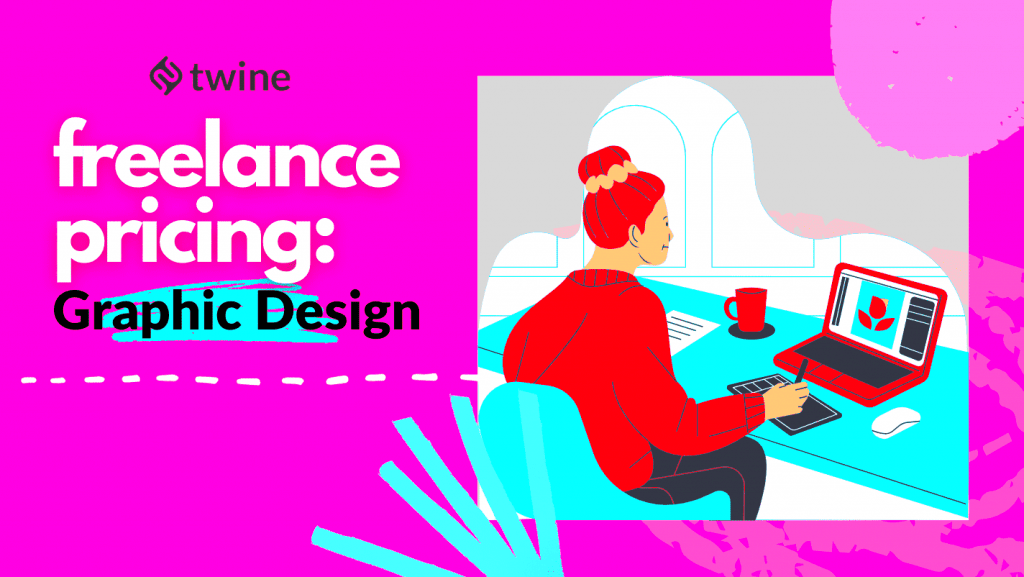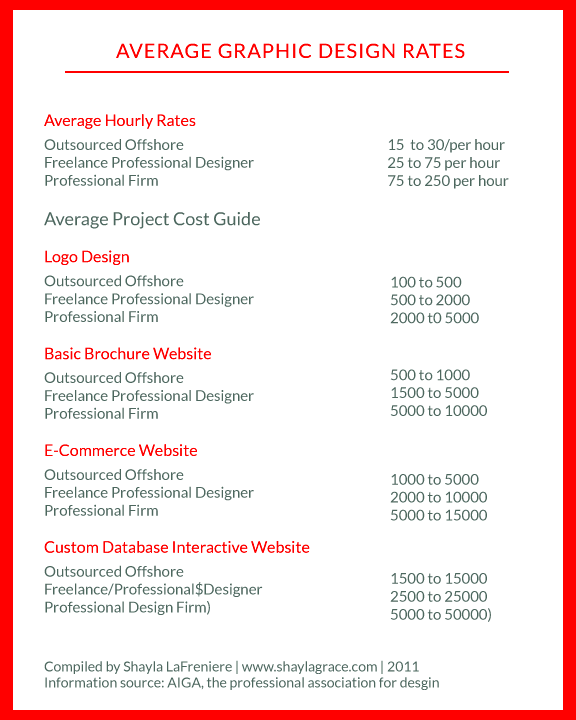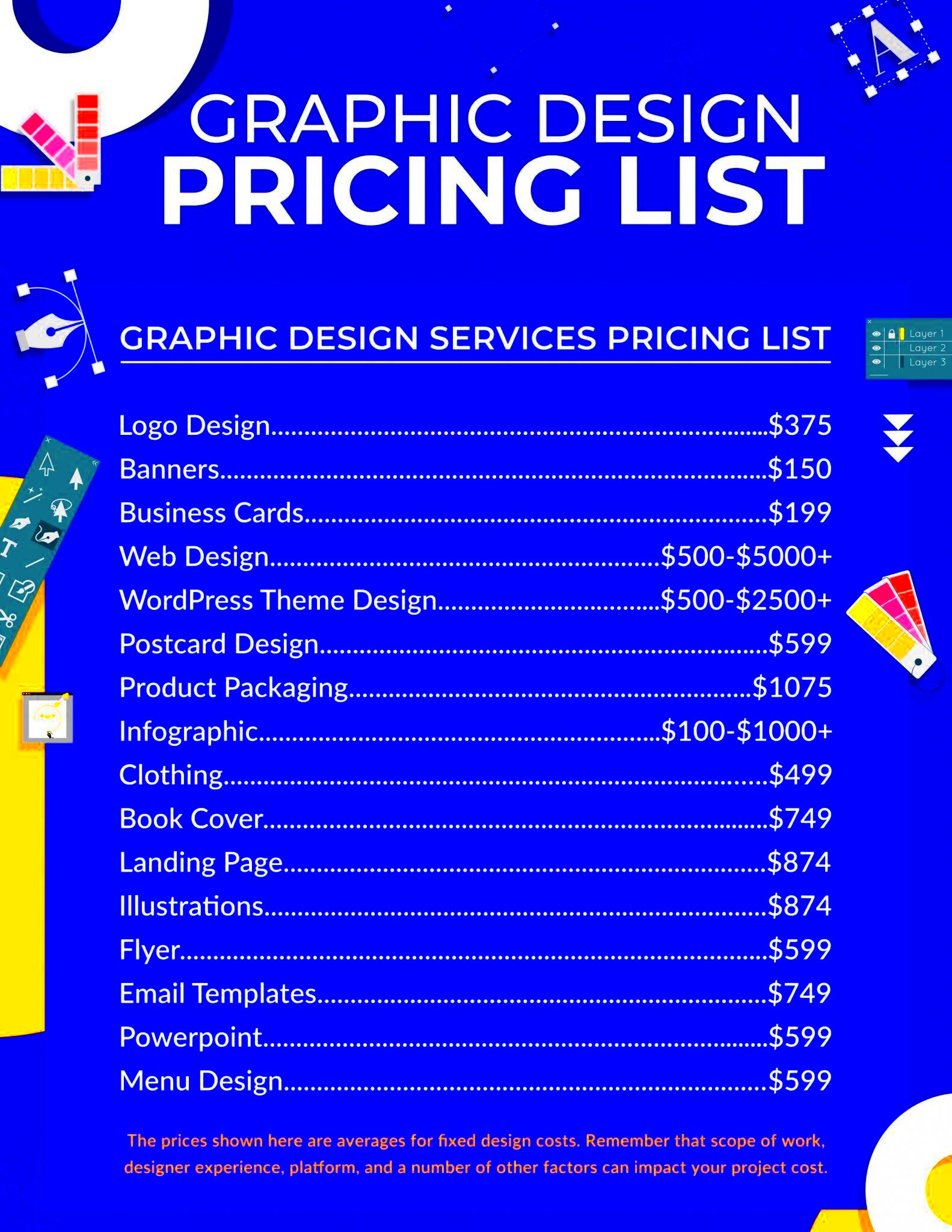Freelance graphic design is akin to standing at the brink of a big ocean, with no knowledge about its depth while pricing your work. It is not solely covering your costs; rather it is valuing your skills, experience, and creativity. At the beginning, I would undervalue my services so as to attract more clients. However, in no time I understood that there were better reasons for leaving other jobs. Therefore determining what would be fair charge for one’s work is important if one wants to be successful in their freelancing profession.
Many factors affect price setting for graphic design services, which include:
- Your level of experience
- The complexity of the project
- Market demand
- Client budget
Bear in mind that the primary aim is not to make money but rather to establish an environment that will be facilitating for the growth of yours art.
Factors Influencing Your Rates

Who would have thought that establishing prices was more complex than it appears? One important lesson I have learned throughout my experiences is that many different things come into play:
- Experience: More experienced designers typically charge higher rates due to their refined skills and portfolio.
- Project Complexity: A logo design may be less time-consuming than a full branding project, affecting how you set your fees.
- Client Type: Corporate clients may have larger budgets compared to startups or non-profits.
- Geographic Location: Rates can vary based on where you live and work.
- Market Trends: Keep an eye on what others are charging in your niche.
These elements will help you maintain equilibrium between obtaining reasonable compensation and luring customers.
Also Read This: How Much Time Does Fiverr Take to Clear Payments?
How to Calculate Your Fees

The nature of finding out the payable fee sometimes necessitates looking inside oneself in addition to mathematical computations. This is how I did it:
- Determine Your Hourly Rate: Consider your living expenses, experience, and desired income. A good starting point could be calculating your ideal annual income divided by the number of billable hours you expect to work in a year.
- Estimate Project Time: Break down the project into stages (research, design, revisions) and estimate how many hours each will take.
- Use a Pricing Table: Here’s a simple example:
| Project Type | Estimated Hours | Total Cost (at $50/hour) |
|---|---|---|
| Logo Design | 10 | $500 |
| Brand Identity | 30 | $1500 |
Once you have done your math, make sure you add a little more money for unforeseen changes and feedbacks from your clients. This is just a stage in the freelancing journey for graphic designers!
Also Read This: How Do You Rate on Fiverr? A Comprehensive Guide
Common Pricing Models for Graphic Designers
Once I floated around the freelance market, I found out that selecting an appropriate pricing scheme may alter everything. Just like several models, each one of them has advantages and disadvantages of its own. Understanding them helps in bringing clarity on how you can synchronize your pricing plan with your working pattern and what is expected by customers.
- Hourly Rate: This model is straightforward. You charge clients based on the number of hours you work. It’s great for projects with uncertain timelines, but it can sometimes lead clients to hesitate, worrying about escalating costs.
- Fixed Price: Here, you quote a flat fee for the entire project. This can build trust, as clients know exactly what they’re paying. However, make sure to clearly define the project scope to avoid scope creep.
- Value-Based Pricing: This approach considers the value your work brings to the client rather than just time spent. It can lead to higher fees, especially if your design has a significant impact on their business. However, it requires a strong understanding of the client's needs.
- Retainer Agreements: Some clients may prefer to hire you on a monthly basis for a set number of hours. This can provide steady income and help you build long-term relationships.
Thinking back on my personal voyage, I’ve repeatedly alternated between such types according to the task at hand. In certain instances, being adaptable may serve quite well as a companion.
Also Read This: Can I Get My Book Formatted on Fiverr?
Setting Competitive Rates
When I have first stepped into the freelancing world, the issue of competitiveness was very much on my mind. It is hard to put a price on your abilities that will be appealing to clients yet at the same time be of great worth to you. In addition, it is not easy at all. The secret lies in doing research as well as knowing oneself.
First off, conduct a market analysis. Some of the pragmatic ways of doing this include:
- Research Competitors: Look at what others in your niche are charging. Websites like Behance and LinkedIn can be gold mines for this.
- Assess Your Skills: Be honest about your experience and the quality of your work. If you have a standout portfolio, don’t hesitate to charge accordingly.
- Consider Your Niche: Specializing in a specific area (like branding or web design) often allows you to charge higher rates.
- Value Your Time: Remember that your time is precious. Calculate your minimum acceptable rate to ensure sustainability.
After I began utilizing these strategies, my self-assurance expanded. It is important to keep in mind that your prices indicate more than just your work; they also represent your faith in yourself.
Also Read This: Where to Find the Recent Buyer List on Fiverr
Communicating Your Pricing to Clients
Horning in the pertinency of price communication can never be understated; it’s imperative that trust is built. I have seen how a clients’ decisions can be significantly impacted by an agency’s pricing presentation. At the core of such discussions must always be honesty and clarity.
Here are a few tips that have helped me in effectively communicating my pricing:
- Be Transparent: Clearly outline what your fees include. Break down services and deliverables so clients know exactly what they’re paying for.
- Explain Your Value: When discussing rates, share your experiences and the benefits of your work. Clients appreciate understanding why they’re investing in you.
- Provide Options: Offering different pricing packages can cater to various budgets. It shows flexibility while guiding clients toward what they need.
- Use Professional Language: Maintain a professional tone in your discussions. It reflects your seriousness and commitment to quality.
The moment I acquired the skill of expressing my pricing self-assuredly, it changed everything in terms of interaction with clients. It was easier to approach topics related to pricing by establishing a relationship and understanding their needs.
Also Read This: How to Change Your Account Name on Fiverr
Adjusting Your Rates Over Time
You know, sometimes, as a freelancer you have to make a choice about your rate that feels like walking on a tightrope. I can clearly recall the days when I used to set prices which were good in my opinion but later realized they did not match my skills. It is important for you to be able to change your pricing policy when you develop and when there are fluctuations in the industry.
A few noteworthy factors to think about when it comes to changing your rates are:
- Reflect on Your Growth: With every project, your skills sharpen. If you’ve completed complex projects or gained new certifications, it’s time to reassess your fees.
- Monitor Market Trends: Keep an eye on industry standards. If your peers are increasing their rates, it might be a sign that you should too.
- Client Feedback: Sometimes clients will express their perception of your value. If you consistently receive positive feedback, it could justify a rate hike.
- Annual Reviews: Set a reminder to review your rates at least once a year. This can be a great opportunity to adjust based on inflation and your evolving expertise.
Based on my experience, it is important to be honest regarding altering rates with the customers. If you talk about your increase and the worth of what you give just in a casual conversation, they will surely understand and accept it.
Also Read This: What’s Fiverr All About?
Frequently Asked Questions
Throughout the years, I have met with several inquiries arising from customers plus fellow independent contractors. Among them are what could be considered the most usual questions on freelance graphic design fees:
- How do I determine my hourly rate? Start by calculating your desired annual income and dividing it by the number of billable hours you plan to work.
- What if a client thinks my rates are too high? Use that moment to explain the value you provide. Share past successes and how your work can impact their goals.
- Should I offer discounts? Offering occasional discounts can attract new clients, but ensure it doesn’t undervalue your services. Consider seasonal promotions or package deals instead.
- Is it okay to charge more for revisions? Absolutely! If a client requests changes beyond the agreed scope, communicate this clearly and adjust your fees accordingly.
This often serves to provide a chance for conversations, where you can correct misconceptions and also reaffirm your importance.
Conclusion
The thrill and excitement that comes with starting a freelance graphic design career are unmatched but, at the same time, it is also challenging. Every step towards building a successful career from pricing to sharing those prices counts. I do know from experience that being sure about what you charge as well as knowing how markets operate can help in fostering your development.
Bear in mind that your skillset is not the only thing that determines how much you charge. A unique viewpoint is attached to what you create. So, enjoy the process, continue improving and be open to change whenever necessary. Recognize what it means to be creative and work hard; use prices as instruments which will allow finding a balance between endurance and fortune.




